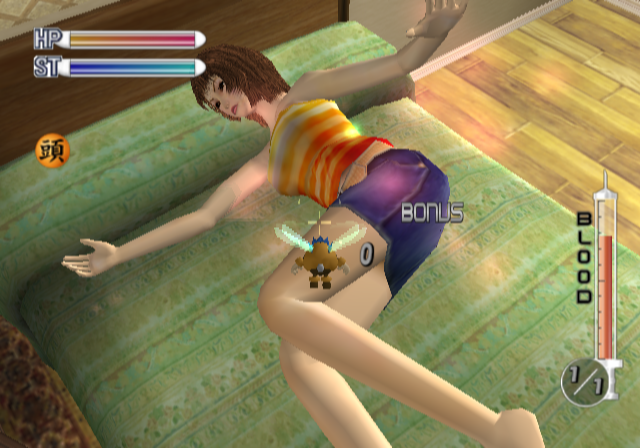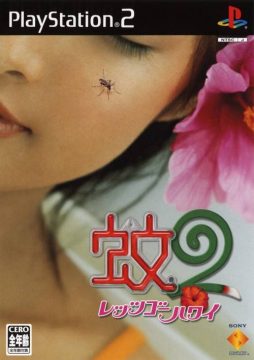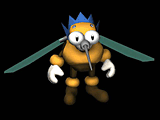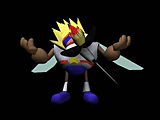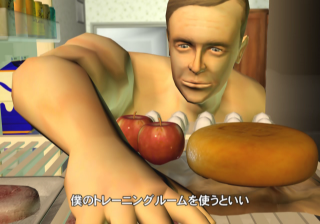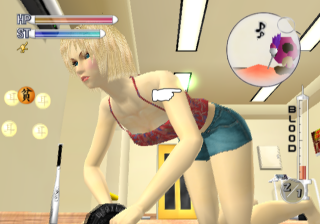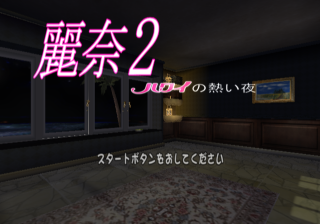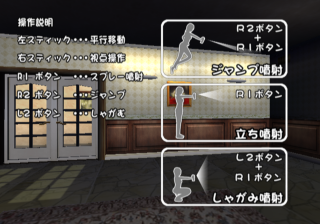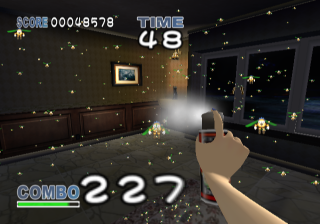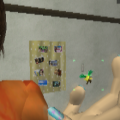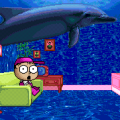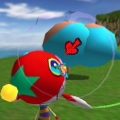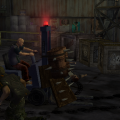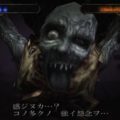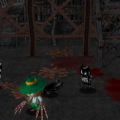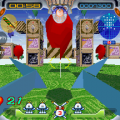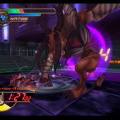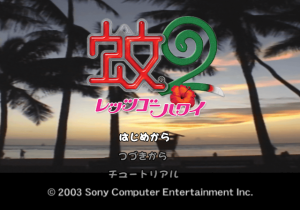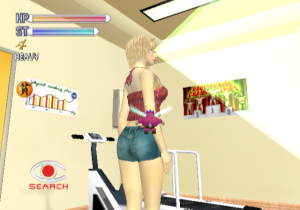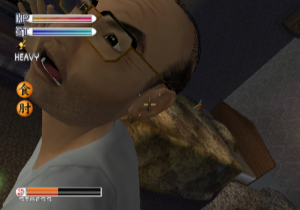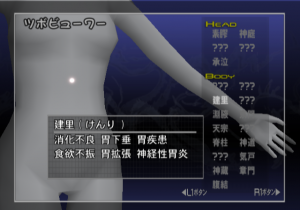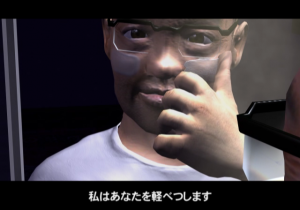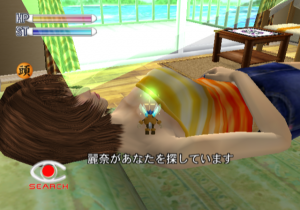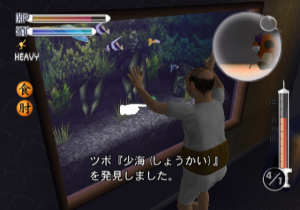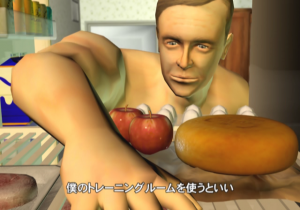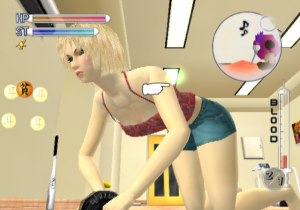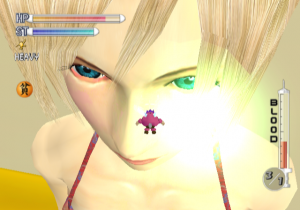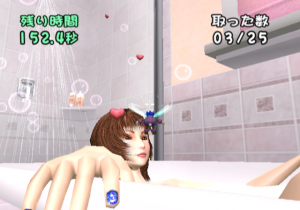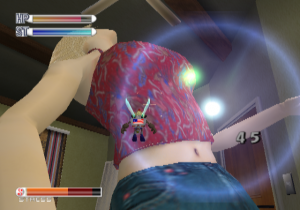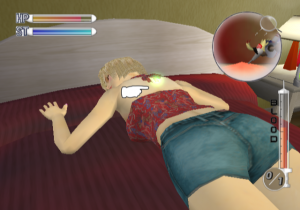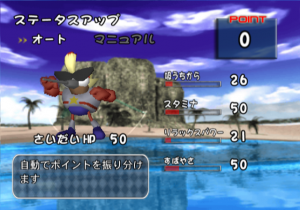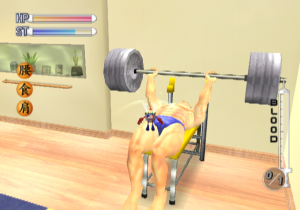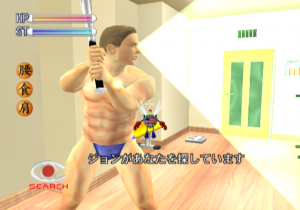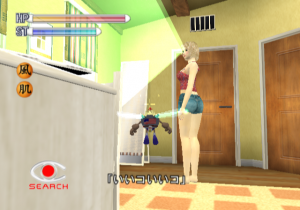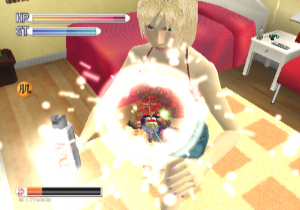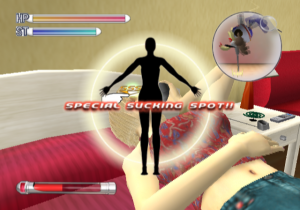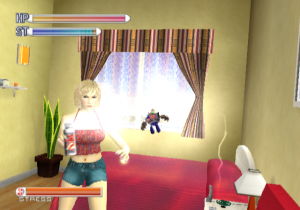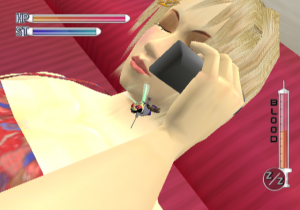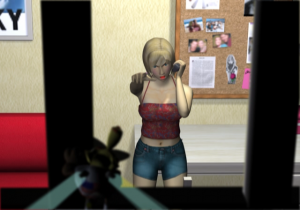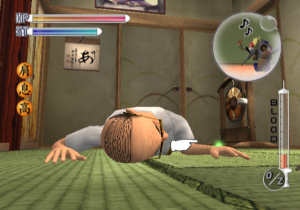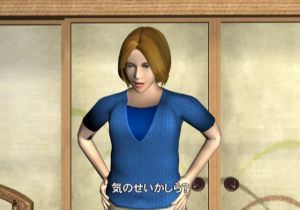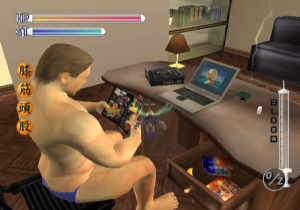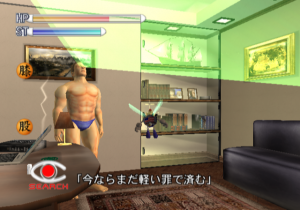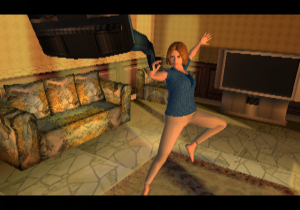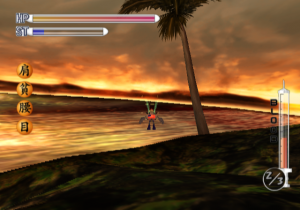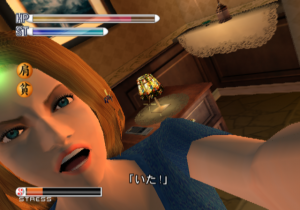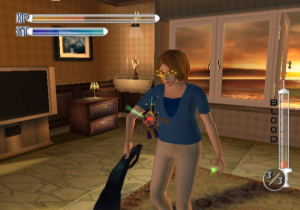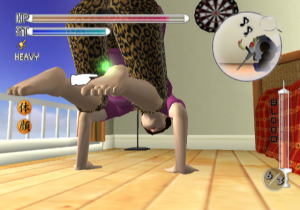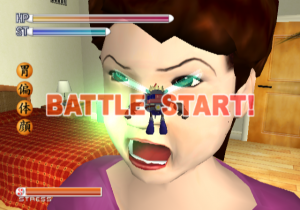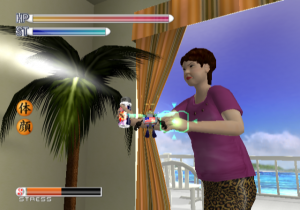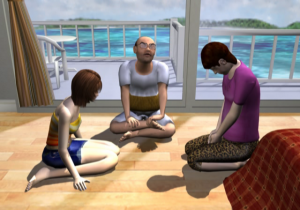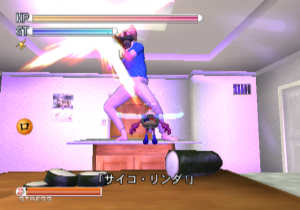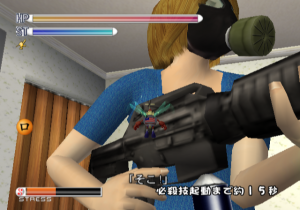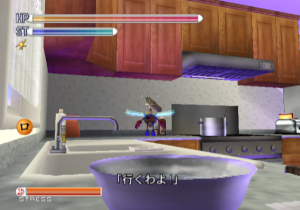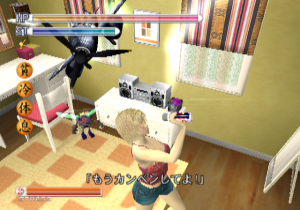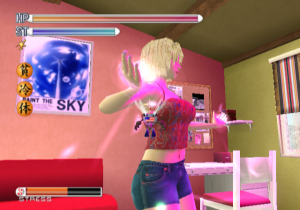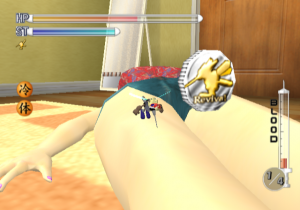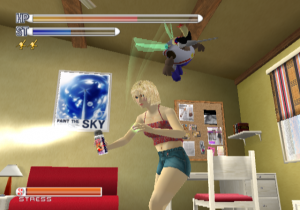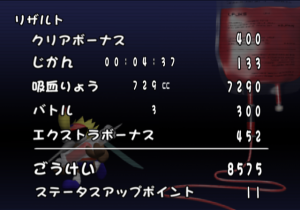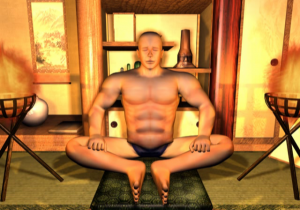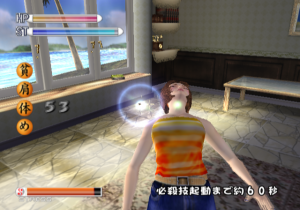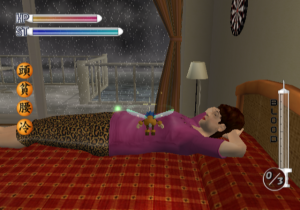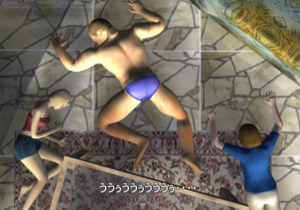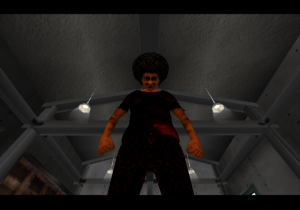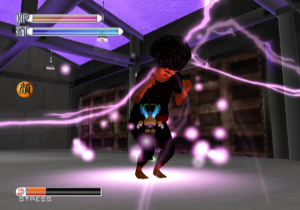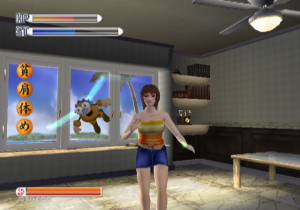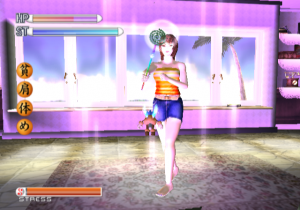- Mister Mosquito
- Ka 2: Let’s Go Hawaii
The Yamadas have had enough: They’re not going to put up with that pesky mosquito yet another year. But what to do after all their attempts at extermination had failed and nearly cost them their own lives? Just get the hell out of here! So the trio flies off to Hawaii, where they will be home staying with the Brown family. But they don’t notice the blind passenger in their luggage until it is too late…
The Browns are an all-American bunch of good-hearted, but a bit too stereotypical people: John is a big bodybuilding naked ape who runs around the house in his underpants, always on search for bananas, Linda is yet another typical housewife, and their daughter Eris (if that’s how the name is spelled) is the typical Western bimbo with tons of boyfriends. At the same time they’re also depicted as quite passive-racist in their dialogue, making fun of the Japanese’s small height and such. The Yamadas return pretty much as they were, only Rena has matured visibly – ironically, while she appears to be of legal age now, the bubble bath scene has been much toned down. Now it is just a bonus stage where you collect hovering hearts while Rena or Eris takes her bath well concealed and rather in the background. Kaneyo get’s electrocuted later in the game, which turns her into a racially insensitive cross between Storm from X-Men and a ’70s Blaxploitation heroine.
Aside from the little illegal immigrant, players now also get the choice to play as an all-American mosquito, with a cool pair of sunglasses, a sheriff star on the chest and the American flag on his back. The game is played the same for both bloodsuckers, but they take on the stages in a different order, and especially fight against their own native family in the final 3-part showdown.
The core mechanics haven’t changed much, although the steering is a lot more responsive now. The biggest difference is the ability to land on any exposed spot of the victim’s skin to suck blood. Simply collecting enough blood and getting out of there (the mosquito now always enters and exits through air vents) of course would make this approach much too easy, so there’s a new type of objective to compensate: The former anti-hero now actually acts as a healer, as his itching venom gets the mysterious power to remedy whatever aches the humans have, and they got a lot of those. After sucking for a prolonged time on a certain body part, one gets to research that part, upon which the corresponding symbol reacts by pulsating as soon as the right spot is uncovered. “Researched” spots are then unlocked as relax points for combat, and hitting the aching body part this way is even more effective.
When the victims get annoyed, they now don’t always jump to battle immediately, but first they have to go on a search for the mosquito. Green light cones come out of their eyes to signify their range of vision, they get up and start looking around the room. It’s easy for the mosquito to hide behind some furniture or inside a jar and wait for the family member to give up the hunt. Only when it is spotted – or when the humans have been pushed too far already – the fight for its life ensues. It’s mostly the same deal as the first game, only all previously researched spots deal as relax spots. Hitting them now reduces the enemy’s stress points, shown in RPG manner by hovering numbers. Hitting the same spot over and over again makes it subsequently less effective, though.
Bloodsucking works a bit differently, too. The tolerance meter is gone, allowing the mosquito to mine the liquid at its own pace. Getting the rhythm right is still rewarding, though: As the mosquito turns from sweating labor to music note-emitting joy, and the process becomes much faster. Sometimes when the donor lifts a hand to slap you to death, a counter starts running, rewarding a last second escape with bonus points for the following evaluation.
After each stage your performance is translated into skill points, which can then be traded into four skills: sucking power, stamina (as the mosquito now gets tired from flying at full speed), relax power and speed. The effect of these is rather subtle, though, and unless you play the same stage multiple times to compare how much easier it gets over the course of the game, you’ll hardly notice the change.
Unfortunately, all stage interactions are gone, and most rooms in the Brown home aren’t too exciting to explore, either, except for Mr. Brown’s home office and the living room. For some reason, they also have a Japanese style tea room hidden behind a secret door, through which Kenichi stumbles accidentally.
There are a few collectibles to make it worth flying around every corner: New colors for the mosquito can be unlocked by grabbing “Color Coins” (although for the American mosquito that only changes the color of its arms and legs). “Fukkatsu Coins” grant one extra life without having to restart the stage when getting squashed. Each room also has a glass of water standing around somewhere – only after the mosquito has sucked enough blood to earn the “heavy” label, it can dive into it to get a major health bar extension.
The years of plenty Japanese quirkiness on Western markets were numbered, it seems, so Ka 2 never got localized. Unfortunately, the language barrier is much higher than it would have been with the original, as it’s necessary to understand things to make educated guesses for the locations of the target sucking spots. It’s a bit easier playing as the American mosquitoes, as the Browns all speak English with Japanese subtitles, and even the narration for its stage introductions is in English. But only some hints will be dropped during the dialog when the characters talk about their ailments. Others have to be picked up in form of scrolls inside the levels, and those are only displayed in Japanese for each mosquito. Even the symbolic representations are in Japanese kanji, so without knowledge of those it’s even hard to recognize already researched ones. They can be looked up in a separate menu that shows all the researched locations on a mannequin, but that only helps those who can actually read it, or those with a extraordinary visual memory. So if you approach this game without any proficiency in Japanese, be prepared for lots of frustrating trial & error.
Rena 2: Hawaii no Atsui Yoru
Like its predecessor, Ka 2 contains a hidden mini game – this time accessed by keeping Start pressed on the second controller as the game boots up. The star of this “Hot Night in Hawaii” is Rena, or at least one assumes so from the title and instructions, as this is a straight first person shooter.
The Game only consists of one single room that’s swarming with mosquitoes, and the goal is to take out as many of them as possible within the time limit. Getting higher “combos” increases the score, accounting for at least a tiny minimum of strategy. For some reason Rena can duck and jump, although that doesn’t really do much for her.
Ka 2 certainly is an improvement over the original in many aspects – it’s more of an adventure game, more of an RPG and even more fluid as an action game. Yet after the crazy novelty of the first game, it comes off as a little too conventional sequel. Despite some changes in specifics, the core mechanics aren’t really touched all that much, the area is still limited to one room per stage (no final room changing level this time, either) and the procedure does start to feel a bit samey towards the end. It would have been a terrible loss if the franchise as a whole had never reached the West, but missing out on this sequel in particular? Yeah, just a little bit sad. The real travesty is that something like Assassin’s Creed is approaching its sixth major iteration with its all too tired formula and repetitive storytelling, while this potential sandbox gold is left lying dormant. Zoom has been keeping afloat with the help of mobile games and WiiWare releases, so it doesn’t appear likely they ever take on a full-fledged sequel.
